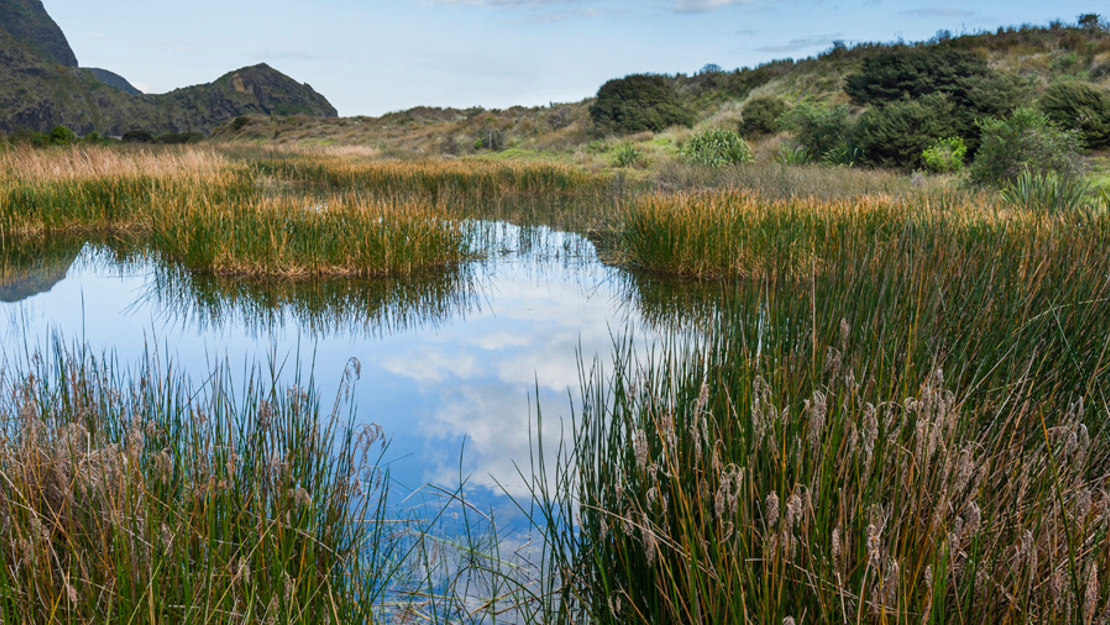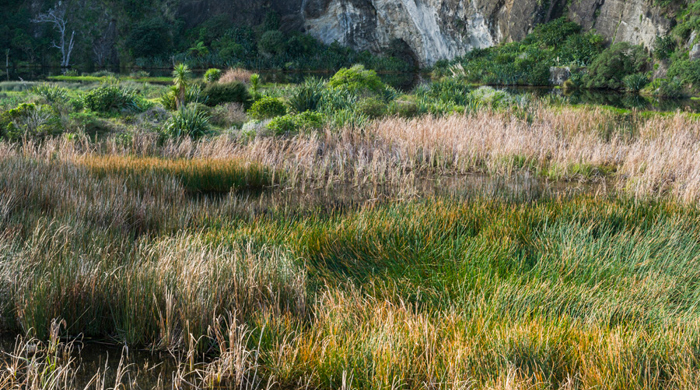Machaerina sedgeland ecosystem (WL11)
Wetland ecosystem
About this ecosystem
This ecosystem occurs in:
- shallow wetlands
- streams
- dune lakes
- lagoon margins.
Machaerina sedgeland occupies a wide range of soils and in mesotrophic wetlands (moderate water quality).
It is found across the Auckland region on many lake margins and in shallow depressions.
You can see this ecosystem on the lake edges of dune lakes including:
- Lake Rototoa
- Lake Tomarata.

Flora and fauna in this ecosystem
This ecosystem is dominated by sedgeland / rushland of a wide range of regional variants. Species include:
- Machaerina
- Lepidosperma
- Eleocharis
- Carex species
- harakeke.
A range of native birds use this ecosystem, including:
- mātātā (fernbirds)
- pūkeko
- matuku (Australasian bittern)
- spotless crake (pūweto).

Threats to this ecosystem
This ecosystem is critically endangered. Drainage of wetland and conversion of land to pasture have greatly reduced the extent of this ecosystem.
It is also highly vulnerable to weed invasion from species such as grey willow, which is capable of transforming areas into willow wetland.
Lakeshore examples have declined as a result of lake eutrophication. This happens when increased nutrients and minerals enter the water body leading to excessive algae growth. This, in turn, reduces the amount of oxygen in the water for fish and other animals. Other plant species more suited to these conditions such as raupō can invade and reduce the extent of this ecosystem.



